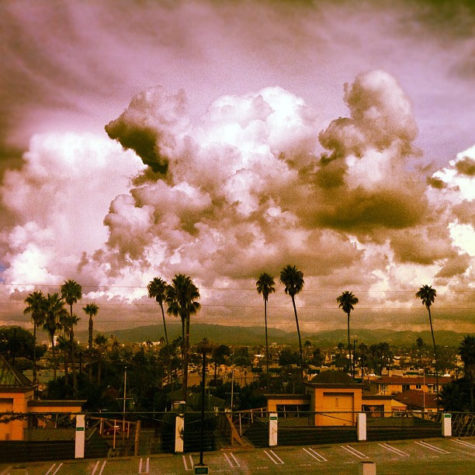 When I turned on my phone over the weekend after a blissful week without cell service, I got an increasingly alarming series of messages from friends at home.
When I turned on my phone over the weekend after a blissful week without cell service, I got an increasingly alarming series of messages from friends at home.
A fire broke out near where I’m dogsitting
If I get evacuated can I bring the dogs
I am going to text your mom
I’m evacuating my brother
I took a little comfort in the last message in one group text, from a neighbor to someone who needed a place to stay: There’s a key under the mat. And later, when I found out that the fire was contained with no injuries reported, and a small crew of evacuees had found each other safe at our empty house, I felt even better. But like my cell phone, I was plunged back into reality: it’s fire season again.
This fire ignited and spread during the combination of a 100+ degree day and strong Santa Ana winds. Elsewhere in southern California, more fires burned in the mountains and near the beaches. Farther north, friends drove past flames on both sides of the interstate as they crossed from Oregon to California, coming home.
Many factors contribute to fires, from temperature to wind to the length and timing of the rainy season. And according to a paper this spring in Geophysical Research Letters, the risk of fire could be increasing when we’re missing a key ingredient of Southern California summer weather: clouds.
Clouds have usually been a defining factor of summer here. I’m a relative newcomer, but I quickly got into the summertime weather conversations that revolve around May Gray, June Gloom, and occasionally No-Sky July and Fogust. (A little further north, Karl the Fog has a lovely twitter account if you’d like to hear about socked-in San Francisco, from a fog’s-eye view.)
But as the researchers looked at the skies above southern California, they saw that summer cloud cover has decreased by 25 to 50 percent since the 1970s. They looked at hourly records of the skies collected by California airports, finding that the cloud base has risen, lifting the gloom between 150 and 300 feet. When the team combined these records with vegetation moisture data from the U.S. Wildland Fire Assessment System, they learned that less cloud cover meant lower moisture in the hills around Los Angeles—and less moisture ramps up fire risk.
Southern California’s cities are part of the problem. The concrete jungle soaks up the sun’s rays and radiates the heat better than a Baywatch lifeguard. This heat burns off the summer fog more quickly, earlier in the day. And in the autumns that followed clearer-skied summers, the region’s plants were drier.
Fire is complicated, though—our fires last fall came after drought-busting rains in many parts of the state, and were fueled by the added vegetation, not the cloudless skies of summer. But Park Williams, the lead researcher, has said that that absence of clouds can add to an already precarious fire picture.
Karl, don’t you want to head south for the summer?
*
Image by Sam Lavy via Flickr/Creative Commons license
One thought on “Cloud Cover”
Comments are closed.